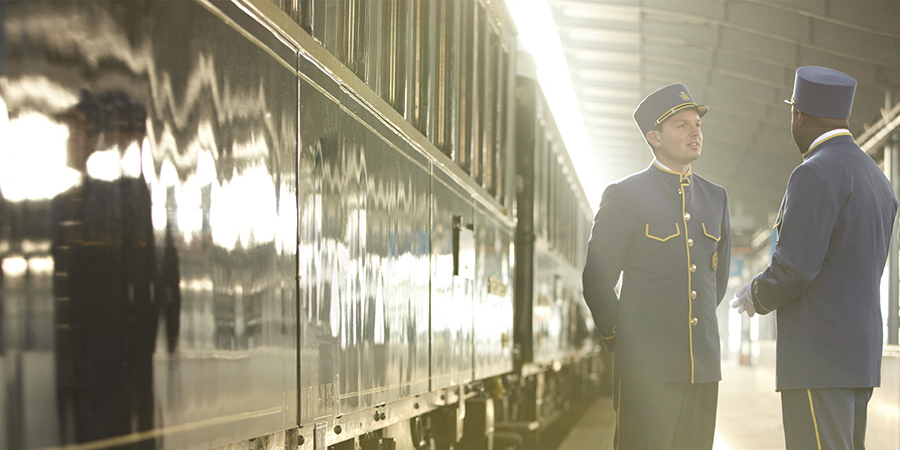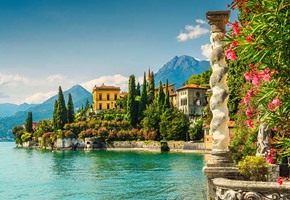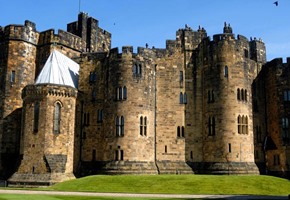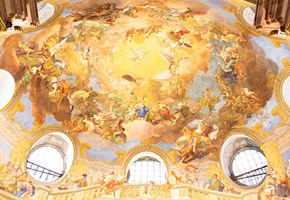Has there ever been a finer example of luxury, glamour and class than the Orient Express? Possibly the first luxury train in the world, the Orient Express combines a refined heritage, elegant carriages and the highest class of on board service to offer passengers a once-in-a-lifetime experience on history's greatest rail journey.
The history of the Orient Express
Not-so-humble beginnings
To follow the story of this marvellous train back to its grand maiden voyage, we have to go right back to the late 19th century.
The year is 1883. Robert Louis Stephenson's 'Treasure Island' has just been published and work begins on Antonio Gaudí's Sagrada Familia in Barcelona. Franklin D. Roosevelt, James Joyce and Virginia Woolf were born the year before, while the world's first skyscrapers are raised in Chicago in the next few years. Europe is enjoying a fragile peace between its own nations, which lasts up until the First World War, and it is this peace which nurtures the second industrial revolution.
Belgian national Georges Nagelmackers had previously, in 1882, organised a journey from Paris to Vienna on board what he called his Train Éclair de Luxe. Inspired by the elegance of this journey, he decided to create the first iteration of the Orient Express, funded and owned by his rail company, Compagnie Internationale des Wagons-Lits. The new train was designed to replicate the style of the Pullman trains of the USA, prioritising comfort and style over all else.
The first ever Orient Express journey embarked on June 5th 1883, leaving Paris and travelling 1,243 miles to Vienna. Hauled by steam engine, the train would continue on the same route for several months before the route changed, taking passengers from Paris to Istanbul (or Constantinople as it was known then), through Germany, Austria, Romania and Bulgaria. It was over the next fifty years in which the Orient Express cemented its position as the world's best luxury train, unmatched in intrigue, romance and elegance.
Glamour on the Orient Express
After a short break for the First World War, the Orient Express enjoyed what is regarded as its 'Golden Age', thanks to the considerable popularity of rail travel at the time. Through the roaring twenties and into the thirties, the Express played host to scandalised princes, ambassadors, writers, composers and artists. A variant of the train, from London to Baghdad, was even granted a place in literary notoriety with the publication of Agatha Christie's 'Murder on the Orient Express' in 1934.
With its reputation, the Orient Express was known as the 'Train of Kings' thanks to its popularity among the European royalty. Figures such as Tsar Nicholas II of Russia, King Leopold II of Belgium and Ferdinand I of Bulgaria all graced the distinguished carriages. Along with this, cultural figures enjoyed the tasteful art-deco furnishings and beds including entertainer Josephine Baker, writer Leo Tolstoy and social revolutionary Leon Trotsky. The Orient Express became the epitome of high class travel, aspired to by those who wished for more and celebrated by those rich few who populated the cabins, suites and carriages of the train.
The Orient Express was also the site for several important events and meetings in history. Famously, the armistice for the First World War was signed on board the train and later, the year before the Second World War saw the French sign surrender papers to Nazi Germany in another of the carriages. In fictional events, Bram Stoker's 'Dracula' sees Jonathan Harker, Van Helsing and Mina travel back to Transylvania to battle the titular vampire on board the train, while James Bond fought a rival spy in a carriage for the book and film versions of 'From Russia with Love'. All these events and characters have seen the Orient Express become arguably the most well-known train and rail journey in history.
The Venice Simplon-Orient-Express
With the sixties and seventies, use of the European rail network declined with increased use of the car. A number of variants on the Orient Express stopped running around 1962, including the original Orient Express and the Arlberg Orient Express. Only the Simplon Orient Express remained, and this too was removed from the rails in 1977, hailing the end of George Nagelmacker's Orient Express.
In that same year, James Sherwood, an entrepreneur from the USA bought a number of the original carriages, still decked out with the original wooden panelling and art-deco décor. Using specialist craftsmen, some of them from families who worked on the original train, he restored the carriages of the Orient Express to their former grandeur and christened his new luxury train the Venice Simplon-Orient-Express. Relaunched in 1982 as a leisure train, the Venice Simplon-Orient-Express maintains the tradition of high-class elegance and sophistication which its namesake first pioneered in the late 19th century, journeying on many of the same routes as the original.
Nowadays, the Venice Simplon-Orient-Express harks back to the halcyon days of luxury rail travel in Europe enjoyed by the passengers of the original Orient Express. Magnificent carriages of polished wood, tasteful white decorations and plush comfortable furnishings combine with excellent service and the cuisine of a 5-Star restaurant to make the Venice Simplon-Orient-Express one of the greatest rail journeys on the planet.






